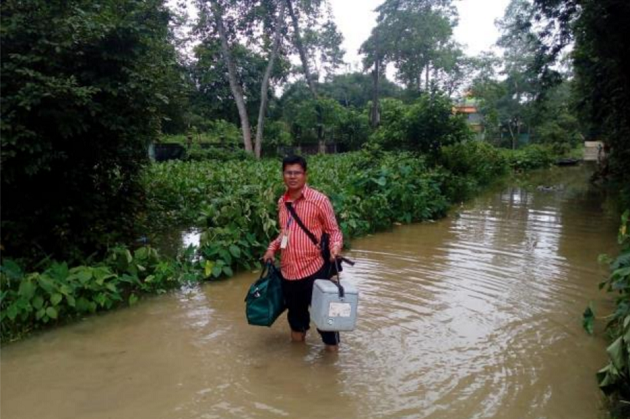
Update I – 28 July 2019 - Nearly 15 000 people, suffering mainly from infectious diseases, have been recorded by Health Emergency Operations Centre, following heavy rainfall and severe floods that started on the 9th of July in Bangladesh. The number of deaths increased to 114 in the 28 affected districts of the country.
Five Upazilas health complexes and 204 community clinics across the country have been inundated or damaged while cases of diarrhoea are rising in the Jamalpur, Gaibandha, Netrokona and Lalmonirhat districts; similar situations are with the Acute Respiratory Infections in Cox’s Bazar, Lalmonirhat, Jamalpur and Sunamganj districts, and with skin diseases in Lalmonirhat district.
Ministry of Health and Family Welfare (MoHFW) has mobilized 2,451 Medical Teams to work in the flood-affected areas for assisting those in need of medical support and to avert communicable disease outbreaks that are likely when flooding levels recede. Shortage of safe drinking water and proper sanitation facilities increases the probability of respiratory infections, communicable and water borne disease outbreaks.
For addressing the needs of medicines, Inter-Agency Emergency Health kits (IEHK Kits), supplied by WHO, were dispatched from the Central Medical Store and are being used to contain flood-related health problems. WHO is also procuring additional emergency drugs, including 5,000 anti-snake venoms to supplement government health service efforts to flood affected communities.
WHO Surveillance and Immunization Officers (SIMO) and Divisional Coordinators (DC) are providing support to District Civil Surgeon Offices in disease surveillance and coordination activities without hampering routine immunization activities. WHO also maintains close cooperation with the DGHS, the Ministry of Health and Family Welfare and local health authorities to monitor the current situation and to ensure timely response.
